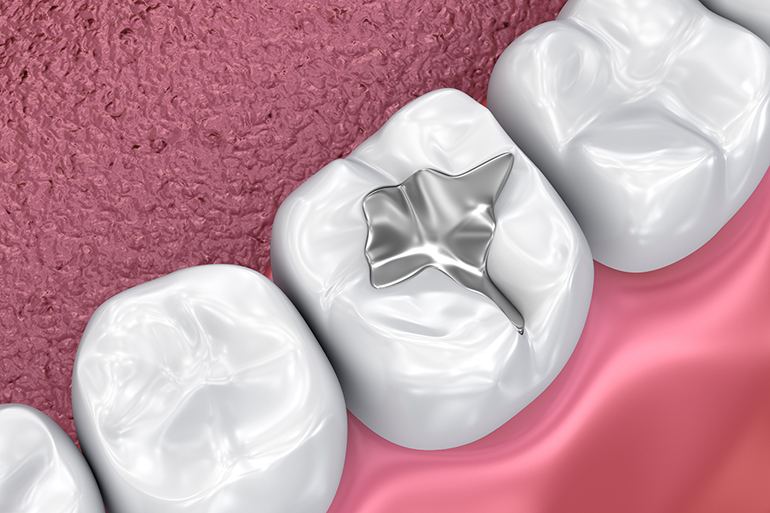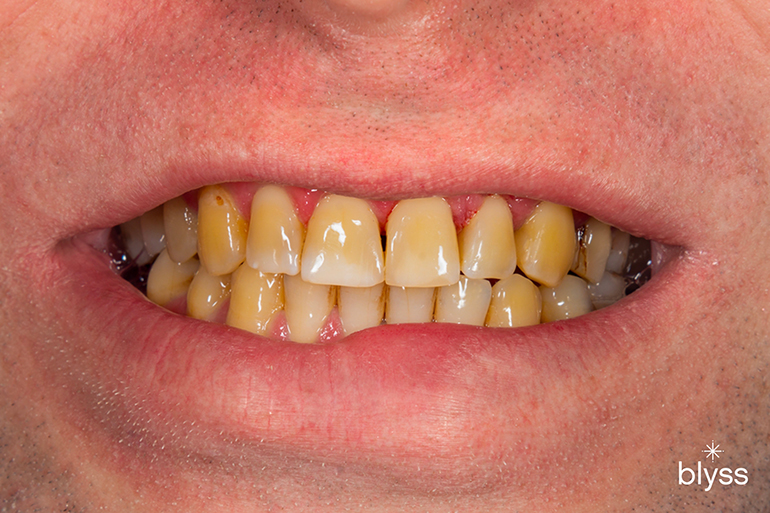Have you ever been surprised by a dentist who recommended 10 teeth fillings? A second-opinion dentist says, “you don’t need 10 fillings, you only need 3 at the moment.”
And you utterly have no clue when dentists point to these grey spots in your x-rays.
This leads to confusion. Sometimes distrust. And worse, desperation.
A tooth filling is one of the most common dental procedures. But does your tooth really need a filling in the first place?
There are a few key signs that your tooth may be suffering from decay and needs a filling.
Before you nod your head and say yes to this procedure, it’s important to understand what a filling is and how it works.
A filling is essentially just a small patch that gets placed inside the tooth to treat cavities. This patch is usually made of either composite (white resin) or amalgam (metal).
But did you know that many dental fillings are actually overprescribed?
In many cases, small cavities don’t need to be filled immediately since they may not worsen or even cause discomfort.
This means some people end up paying for a procedure they don’t really need! So yes, fillings can be a money trap.
How do I know if it’s necessary? Let’s find out!
Considerations for Determining Whether a Tooth Filling is Necessary
Dentists assess the severity of tooth decay and the resulting pain symptoms to determine if a filling is necessary.
Dentists use a combination of visual assessment and x-ray to diagnose tooth fillings.
During the visual exam, dentists look for signs of cavities or damage to the enamel, such as cracks and discoloration.
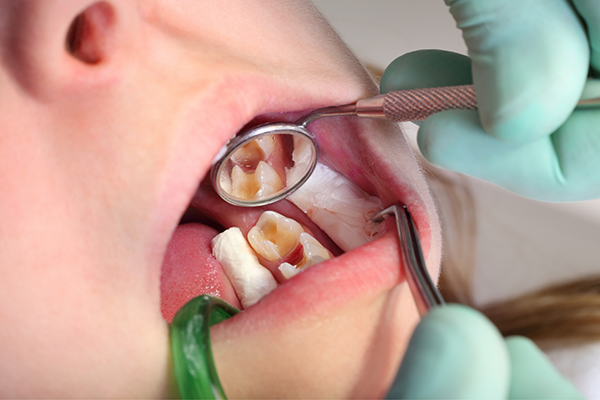
Cavities are small holes in your tooth caused by bacteria that can lead to infection or decay. If there is decay present, the dentist may need to remove it and apply a tooth filling to prevent further damage from occurring.
They also check for plaque buildup, which can indicate that decay has begun underneath the gum line.
The x-rays provide confirmation of the location and extent of the decay.
Furthermore, dentists use pain symptoms to determine when a tooth filling is necessary.
Pain symptoms can include sensitivity when eating sweets, a dull, throbbing ache that worsens over time, and pain while chewing or drinking hot or cold beverages.
If all signs point to needing a tooth filling based on these exams and assessments, then your dentist will likely suggest having one placed in order to restore your tooth’s health and alleviate any pain caused by it.
But sometimes, you don’t have any symptoms at all. You just get a surprise when the dentist points to an area that needs dental fillings. I’ll explain below.
Health Risks of Not Getting Filling When Needed
While the idea of getting a filling may not be particularly appealing, it’s important to understand that waiting can result in more serious problems down the line.
Let’s take a look at some of the potential health risks associated with not getting a filling when needed.
Further Damage to the tooth and adjacent teeth
When large cavities go untreated, they may get bigger and cause damage to other teeth.
Tooth decay is a progressive problem. It can easily spread to adjacent teeth and cause major damage if left unchecked, which may result in needing multiple fillings.
Impact on Overall Oral Health
Have you ever had tooth pain? It’s the worse feeling. You can’t function, think, and you feel that constant throbbing pain.
It’s also possible for an untreated cavity to lead to infection, which can lead to a root canal and even result in tooth loss. It can also lead to costly tooth replacement procedures such as dental implants.
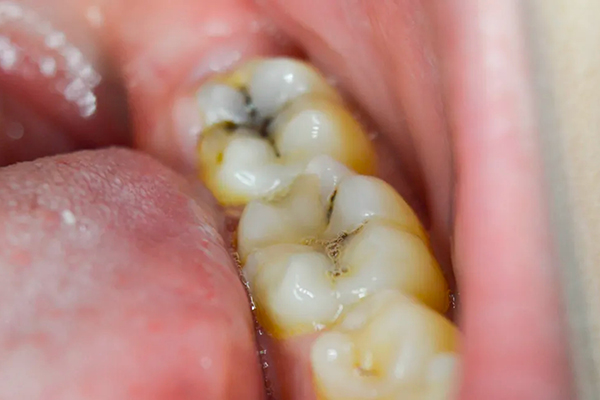
Regular checkups at the dentist can help prevent cavities from developing in the first place, making them easier to treat when they do occur. Early detection can also ensure that any abscesses are caught before they become too severe.
Figuring Out the Conservative vs. Aggressive Approach of Dentists
Have you ever had a cavity? If so, then you know that your dentist has suggested that you get a filling.
But did they recommend it right away? Or did they take a more conservative approach and suggest monitoring decay first?
Let’s take a look at the two different approaches dentists use when it comes to fillings.
The Aggressive Approach: Fillings are Recommended Right Away
Some dentists take an aggressive approach when it comes to tooth fillings. They recommend dental fillings right away for any sign of decay, even if they are small.
I think this tends to have more disadvantages.
Advantages of this aggressive approach:
- Protects your teeth from any additional problems in the future.
Disadvantages of this aggressive approach:
- Extra investment in cost and time.
- You quickly use up your dental insurance benefits for the year.
- Sometimes dentists remove more healthy tooth structures than decay to add a filling.
- Once a tooth is drilled and filled, there is also a chance of getting recurrent decay.
- Fillings don’t last a lifetime, so you will need to get them replaced at some point.
The Conservative Approach: Dentists Observe Minor Decay Rather Than Recommending A Costly Filling Right Away
On the other hand, there are dentists who prefer to take a more conservative approach to tooth fillings.
They will observe small decay over time rather than recommend costly fillings right away. This gives them time to monitor how much worse the decay gets before suggesting any action needs to be taken.
As a professional, I take a conservative approach to preserving your teeth.
I’m a big believer in preventative care for your teeth. Your teeth can have some type of decay. Many are very small.
I was taught by my mentor to keep an eye on any small decay, as many don’t progress and get bigger. They also don’t affect you healthwise. We observe those areas as you get your regular checkup at Blyss. I recommend fillings if I see that the decay is getting bigger.
My conservative approach helps you reduce costs and preserves your teeth.
There are exceptions, of course. I do recommend fillings on small cavities whenever a person is planning on getting pregnant soon or has babies or toddlers. The bacteria that cause decay can be passed to your baby or toddler and change their oral microbiome.
If you’re worried about the potential costs of getting a filling, I encourage you to talk to me about my approach and any possible financing options.
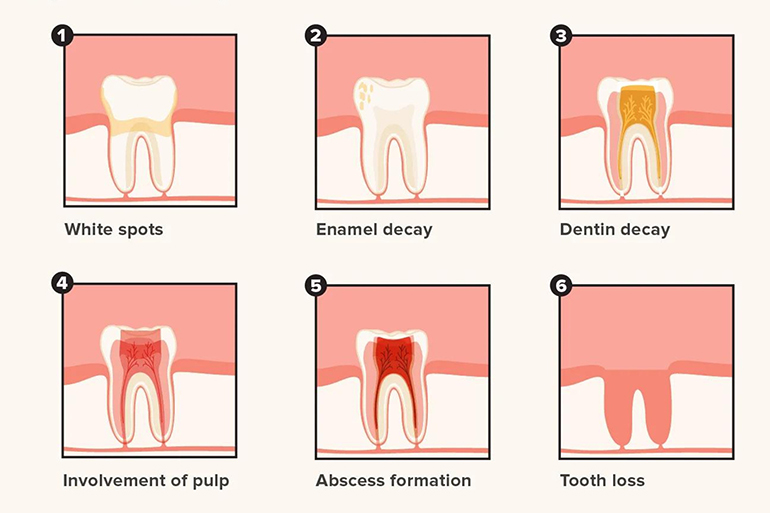
Having an understanding of the various stages of tooth decay will also help inform your decision on whether or not to get fillings in order to address any issues.
Blyss Dental Tip: Hold your dentist accountable by showing you the tooth that needs a filling both in X-ray and intra-oral picture.
Should I Get a Second Opinion About My Tooth Filling?
It is not uncommon for people to question the advice they receive from their dentists.
After all, these are our teeth, and it’s important to make sure that we’re taking the best care of them.
That’s why it might be helpful to look into getting a second opinion when it comes to decisions regarding our dental health.
Questions You Should Ask When Obtaining Second Opinions
When seeking a second opinion, there are some important questions to consider.
- Do I really need these fillings?
- What type of filling material do they recommend? White or composite fillings are better than amalgam or silver fillings.
- Are there any other options besides fillings?
- Are there any risks associated with the treatment?
Who Should You Seek Second Opinions From?
It’s important to find an experienced and knowledgeable dentist specializing in restorative dentistry when considering getting a second opinion about tooth fillings.
Don’t provide the previous dentist’s recommendations to get an unbiased opinion.
Furthermore, the dentist should be able to explain why he/she recommends certain materials over others and provide information about potential risks associated with certain types of fillings if needed.
Blyss Dental Tip: Looking for a second opinion? Don’t show the previous dentist’s recommendations. Your new dentist should be able to provide an informed and unbiased assessment of the different treatment options available, as well as the benefits and risks of each.
Conclusion
In summary, there are many factors to consider when it comes to making decisions about tooth fillings.
From the type of filling material to the costs associated with different treatment options, it can be challenging to make an informed and balanced decision on this important topic.
I hope this article gave you a little better understanding of dental fillings and the different philosophies behind them.
At Blyss Dental, we always recommend what is best for our patients and their individual needs.
If you are ever questioning whether or not you need a filling, please don’t hesitate to book a free consultation with us.
Sources Cited From
- Dental Fillings. (n.d.). National Institute of Dental and Craniofacial Research. https://www.nidcr.nih.gov/
health-info/ dental-fillings - Center for Devices and Radiological Health. (2021, February 18). Dental Amalgam Fillings. U.S. Food And Drug Administration. https://www.fda.gov/
medical-devices/ dental-devices/ dental-amalgam-fillings - Developing More Durable Dental Materials. (2020, April 1). National Institute of Dental and Craniofacial Research. https://www.nidcr.nih.gov/
news-events/ developing-more-durable-dental-materials - American Dental Association. (n.d.-b). Fillings (Tooth-Colored). https://www.ada.org/. Retrieved December 27, 2022, from https://www.mouthhealthy.org/
all-topics-a-z/fillings-tooth-colored/ - American Academy of Cosmetic Dentistry. (n.d.). Tooth Cavities. https://yoursmilebecomesyou.com/. Retrieved December 27, 2022, from https://yoursmilebecomesyou.com/
tooth-cavities
